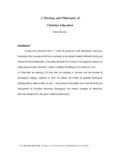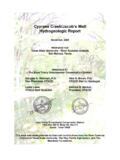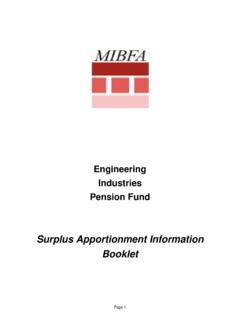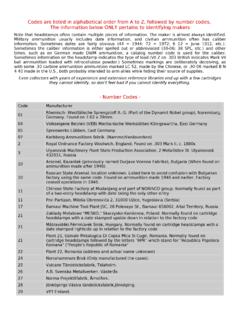Transcription of 2651 MM
1 STYCAST 2651 mm Two Component, Low Viscosity, General Purpose Epoxy Encapsulant Technical DataPage 1 of 5 Key Feature Benefit General purpose Used in a wide variety of applications Machinability Casting can be cut, drilled and tapped easilyLow viscosity Ease of use Product Description : STYCAST 2651 mm is a two component, low viscosity, general purpose encapsulant. It can also be used effectively as an impregnant in certain applications. When fully cured, STYCAST 2651 mm has approximately the same physical and electrical properties as STYCAST 2651. STYCAST 2651 mm has been introduced to cover those applications where improved flowability is required.
2 Instructions for catalyst addition, handling, and cure schedules are identical with those of STYCAST 2651. Colour is normally black, but colour coding is possible. Applications : STYCAST 2651 mm is used in a variety of electronic and electrical encapsulation applications. By incorporation of FILLER SC, it can be used as a dip coat for components. Instructions For Use : Thoroughly read the information concerning health and safety contained in this bulletin before using. Observe all precautionary statements that appear on the product label and/or contained in individual Material Safety Data Sheets (MSDS).
3 To ensure the long term performance of the potted or encapsulated electrical / electronic assembly, complete cleaning of components and substrates should be performed to remove contamination such as dust, moisture, salt, and oils which can cause electrical failure, poor adhesion or corrosion in an embedded part. Some filler settling is common during shipping or storage. For this reason, it is recommended that the contents of the shipping container be thoroughly mixed prior to use. Power mixing is preferred to ensure a homogeneous product. Accurately weigh resin and hardener into a clean container in the recommended ratio.
4 Weighing apparatus having an accuracy in proportion to the amounts being weighed should be used. Blend components by hand, using a kneading motion, for 2-3 minutes. Scrape the bottom and sides of the mixing container frequently to produce a uniform mixture. If possible, power mix for an additional 2-3 minutes. Avoid high mixing speeds which could entrap excessive amounts of air or cause overheating of the mixture resulting in reduced working life. To ensure a void-free embedment, vacuum deairing should be used to remove any entrapped air introduced during the mixing operation. Vacuum deair mixture at 1-5 mm mercury.
5 The foam will rise several times the liquid height and then subside. Continue vacuum deairing until most of the bubbling has ceased. This usually requires 3-10 minutes. To facilitate deairing, gentile warming will also help, but working life will be shortened. Reduced viscosity provides easy air release upon standing for a few minutes. Pour mixture into cavity or mold. Gentle warming of the mold or assembly reduces the viscosity. This improves the flow of the material into the unit having intricate shapes or tightly packed coils or components. Further vacuum deairing in the mold may be required for critical operations.
6 STYCAST 2651 mm Page 2 of 5 Europe North America Asia-Pacific Nijverheidsstraat 7 46 Manning Road 100 Kaneda, Atsugi-shi B-2260 Westerlo Billerica, MA 01821 Kanagawa-ken, 243 Belgium % 800-832-4929 Japan % +(32)-(0) 14 57 56 11 % (978) 436-9700 % (81) 462-25-8815 Fax: +(32)-(0) 14 58 55 30 Fax: (978) 436-9701 Fax: (81) 462-22-1347 NATIONAL STARCH MAKES NO REPRESENTATIONS OR WARRANTIES, EXPRESS OR IMPLIED, CONCERNING THE SUITABILITY OF THESE MATERIALS FOR USE IN IMPLANTATION IN THE HUMAN BODY, OR FOR ANY OTHER USE. These materials are not designed or manufactured for use in implantation in the human body.
7 National Starch has not performed clinical testing of these materials for implantation. National Starch has neither sought, nor received, approval from the FDA for the use of these materials in implantation in the human body. No representative of ours has any authority to waive or change the foregoing provisions but, subject to such provisions, our engineers are available to assist purchasers in adapting our products to their needs and to the circumstances prevailing in their business. Nothing contained herein shall be construed to imply the non-existence of any relevant patents or to constitute a permission, inducement or recommendation to practice any invention covered by any patent, without authority from the owner of this patent.
8 We also expect purchasers to use our products in accordance with the guiding principles of the Chemical Manufacturers Association s Responsible Care program. 2004 National Starch & Chemical Company Properties Of Material As Supplied : Property Test Method Unit Typical Value Chemistry Epoxy Appearance TP-76W
9 Blue liquid Density TP-13W g/cm 1,61 Brookfield Viscosity TP-10W 5 rpm # 6 30 - 40 Choice Of Curing Agents : Curing Agent CATALYST 9 CATALYST 24 LV CATALYST 28 Description General purpose with good chemical resistance and physical strength Low colour, low viscosity.
10 Excellent, thermal shock and impact resistance. Excellent low temperature properties and adhesion to glass. Long pot life, excellent chemical resistance, good physical and chemical properties at elevated temperatures Type of Cure Room Room Heat Viscosity ( ) TP-10W 0,080 to 0,100 0,030 0,040 0,250 0,300 Density (g/cm ) TP-13W 0,95 1,05 1,00 110 1,00 1,10 Properties Of Material As Mixed: Property Test Method Unit Typical Value CATALYST 9 CATALYST 24 LV CATALYST 28 Mix Ratio Amount of Catalyst per 100 parts of STYCAST 2651 mm By Weight By Volume 7 12 15 24 8,5 13 Working Life (100 g @ 25 C) ERF 13-70 45 minutes 30 minutes 2 hours STYCAST 2651 mm Two Component, Low Viscosity, General Purpose Epoxy Encapsulant Technical DataPage 3 of 5 Cure Schedule : Cure at any of the recommended cure schedules.





